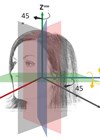Lenire offers a promising but varied solution for tinnitus relief. Peter Byrom shares insights on its effectiveness, challenges and patient outcomes.
I have been involved in tinnitus support for at least 20 years, including a stint on the then British Tinnitus Association’s professional advisory committee, along with David Baguley and Laurence McKenna.
I have, until recently, played an active part (vice chair) with the British Society of Audiology (BSA) Tinnitus and Hyperacusis Group; I was also involved in authoring the BSA Practice Guidance for Tinnitus in Adults 2021. During this time, I have come across various devices, therapeutics and pharmaceuticals that claim to relieve tinnitus. Many have not had the desired effect.
I have come across a neuromodulation device for tinnitus and wanted to share my experiences. I first encountered neuromodulation when I was undertaking a masters in advanced practice at the University of Leeds during endless hours of study for my dissertation; at that point it was a subject on the periphery of my interest as I was focusing on tinnitus and hearing aids. Two years ago, at the Association of Independent Hearing Aid Professionals (AIHHP) autumn conference, I came across the Neuromod stand with the Lenire device and took a new interest in bimodal neuromodulation. Having seen many devices appear on the market and fade away, I was understandably sceptical about a device that claimed to relieve the distress of tinnitus. I was, however, impressed by the level of research that had gone into Lenire and decided to give it a go with appropriate clients.
"Having seen many devices appear on the market and fade away, I was understandably sceptical about a device that claimed to relieve the distress of tinnitus"
Over the past two years of clinical use, my fellow clinician, Nicole Vasey, and I have supplied the device to a good number of clients to assess its benefits for tinnitus relief. We have some amazing success stories, with positive results for a number of clients, although not for everyone. The aim of this article is to give an honest reflection of the benefits and disappointments that may be derived from using the Lenire device, and also to inform clinicians who may have tinnitus clients enquiring about Lenire or any available treatment for their tinnitus.

Nicole instructing a Lenire client.
The Neuromod Lenire device
The Lenire device consists of a small controller of similar size to a mobile phone, linked by a wire to a Tonguetip, and also linked by Bluetooth to a set of headphones. Lenire plays soothing sounds and pure tones through the headphones while simultaneously stimulating the tongue with a very gentle electric current (this feels like having your tongue tickled). The term ‘bimodal neuromodulation’ is derived from the fact that the taste nerve and the auditory nerve are stimulated simultaneously. The Tonguetip has an array of 32 electrodes, 16 corresponding to the left and 16 corresponding to the right, and is configured to match stimulus tones between 570 and 7000 Hz.

A happy customer, Norm Parkin.
The device is set up to the user’s audiogram and the level of tongue stimulation is calibrated in a similar way to finding threshold on an audiogram; we find the threshold where the stimulation is just felt. Lenire runs on bespoke software with a simple and intuitive user interface and can store two different settings in its memory. The device is reasonably robust and we have only had one failed headset in two years. The Tonguetip will provide 180 hours of use prior to requiring replacement, which is enough for 25 weeks at one hour per day.
Background and research
The Lenire device has undergone multiple clinical trials [1-5], demonstrating its safety, effectiveness in over 80% of participants and enhanced benefits when the treatment program is adjusted midway through the course. There have been a number of different programs trialled in the research, but in clinic we tend to us one program where the pure tones played through the headphones are synchronous with the electrode stimulation of the tongue, and one program where they are asynchronous.
Assessment and review
Before recommending Lenire, we will undertake a full tinnitus assessment and history. We perform the Tinnitus Functional Index (TFI) questionnaire at assessment and at each follow-up appointment, and I am particularly keen on General Anxiety Disorder (GAD7) and Patient Health Questionnaire (PHQ9) mental health questionnaires where appropriate. There are a small number of contraindications to Lenire – such as pacemakers (or similar implanted devices), pregnancy, epilepsy, tongue sensitivity, oral lesions and neuralgia – which, if present, would require the patient to seek medical advice before recommending treatment. We tend to fit the device in those for whom tinnitus is the primary concern (rather than hearing loss or hyperacusis) and to clients who score above 25 on the TFI. The advice from Neuromod is to wait three months from tinnitus onset before fitting, however my personal thoughts are that the sooner treatment is started, the better, unless there are high scores for the mental health questionnaires, in which case we would refer to the GP for management. Review appointments are generally held via video link; following their first appointment the client need not visit the clinic unless they wish to do so.
Using Lenire
Users are advised to spend an hour every day in a relaxed manner using the device. The research was based on six weeks for the first program (PS4) and six weeks for the second configuration (PS1) but clinically, we tend to use eight weeks. The device is very relaxing, therefore it should always be used whilst sitting not lying down to prevent the user dropping off to sleep and swallowing the tip! It’s quite normal for clients to notice a short-lived spike in their tinnitus after using Lenire and this generally drops away quite quickly after finishing a treatment session. It may be that the benefit is not noticed until a good number of weeks into treatment and we counsel clients not to expect an immediate change.
Results
The best results are when clients who have been really troubled by tinnitus can say that they don’t really perceive their tinnitus anymore. This is true for the minority, but it is absolutely thrilling. For the majority, the noted changes are that the tinnitus is reduced, or much less bothersome. We have clients who have ceased taking sleep medication because of the benefit from the Lenire. For some, their tinnitus perception has changed and their tinnitus is less disruptive; for others, it has improved the ability to concentrate and work. The benefits are subtlety different for each individual but they are, without any doubt, measurable. It is not unusual to see a dramatic reduction in TFI score. All of which is brilliant! So, where’s the rub?
"One of our clients had a breakthrough at 32 weeks when his tinnitus disappeared"
As an audiologist, it is a scarce event where we have to say we haven’t been able to help, even if it’s making a small difference. There are a small number of clients where Lenire doesn’t seem to help, and it is incredibly frustrating. We have had one patient who found that his tinnitus spiked continuously while he was using the Lenire. He had to stop treatment and was refunded. After ceasing treatment, his tinnitus returned to pre-Lenire levels. Some clients don’t notice benefit after 16 weeks and decide to continue using the device. One of our clients had a breakthrough at 32 weeks when his tinnitus disappeared. We have anecdotal evidence of clients with other providers gaining benefit after a year of Lenire use.
Overall opinion
While the device is expensive at £3600, and there is a minority who fail to benefit, there is a place for Lenire in tinnitus treatment and we will continue to supply the device while there is a demand. The benefits and rewards, when they come, are huge and they do balance out any negatives. I am happy to be involved with what can be described a lifechanging treatment for tinnitus.
References
1. Hamilton C, D’Arcy S, Pearlmutter BA, et al. An Investigation of Feasibility and Safety of Bi-Modal Stimulation for the Treatment of Tinnitus: An Open-Label Pilot Study. Neuromodulation 2016;19(8):832–7.
2. Brendan Conlon, Langguth B, Hamilton C, et al. Bimodal neuromodulation combining sound and tongue stimulation reduces tinnitus symptoms in a large randomized clinical study. Sci Transl Med 2020;12(564):eabb2830.
3. Conlon B, Hamilton C, Meade E, et al. Different bimodal neuromodulation settings reduce tinnitus symptoms in a large randomized trial. Sci Rep 2022;12(1):10845
4. Buechner A, Lesinski-Schiedat A, Becker P, Lenarz T. Real-world clinical experience with bimodal neuromodulation for the treatment of tinnitus - A case series. Brain Stimul 2022;15(2):383–4.
5. Boedts M, Buechner A, Khoo SG, et al. Combining sound with tongue stimulation for the treatment of tinnitus: a multi-site single-arm controlled pivotal trial. Nat Commun 2024;15(1):6806.
Declaration of competing interests: PB receives financial compensation for his clinical work at Peter Byrom Audiology Ltd; this may come from acting as an expert witness in tinnitus medico-legal cases, consulting tinnitus patients in clinic, or providing the Lenire device. Peter Byrom does not receive any recompense, financial or otherwise, from Neuromod Devices who are the manufacturer and supplier of Lenire, or from authoring this article.










